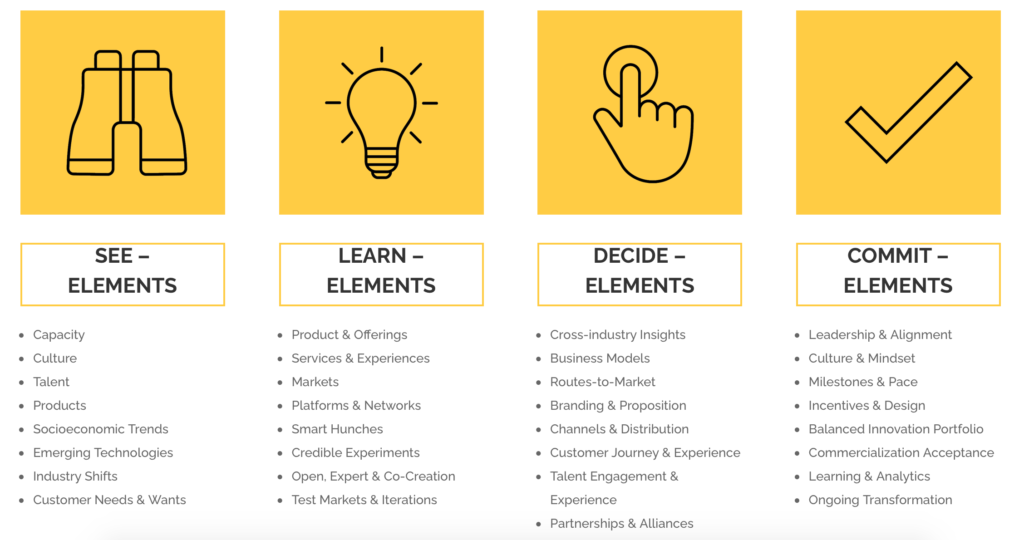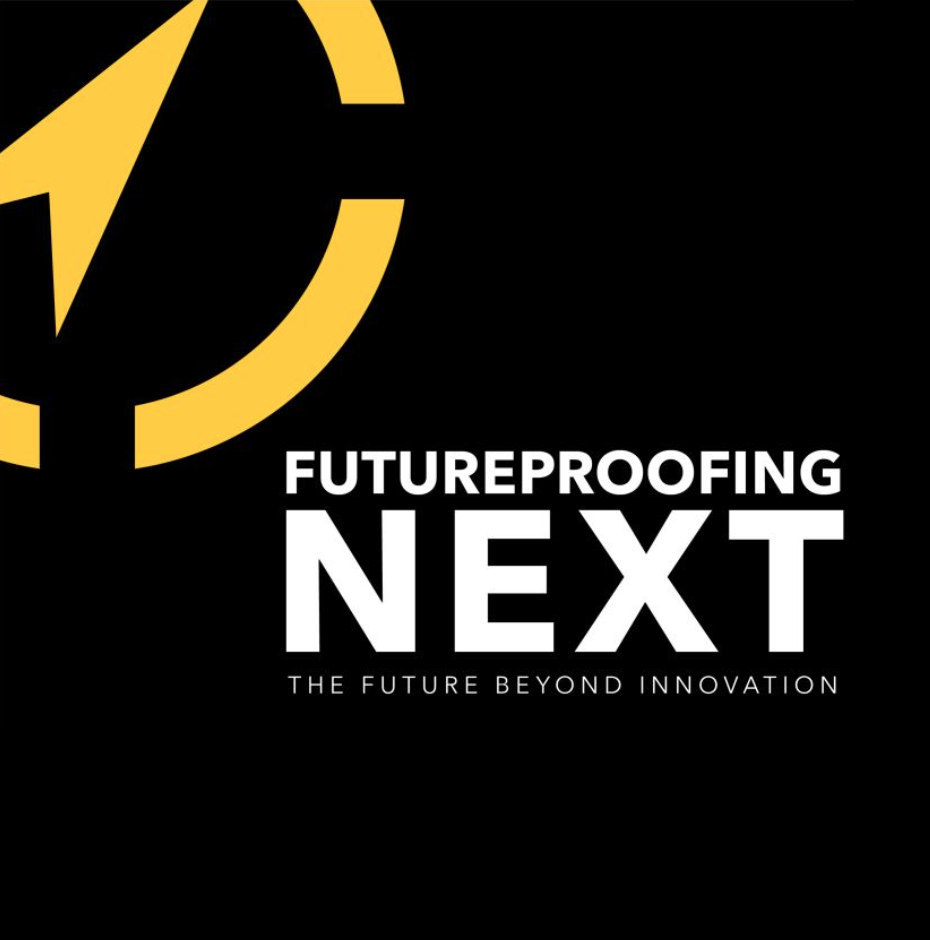When you think of the future, what do you see? Is it opportunity? Excitement? Danger? None of us have a crystal ball and even if we did, that’s not what’s really needed now. With our world changing quickly, and that’s even before COVID, the future is constantly coming at us. So what can we do about it? We can bury our head in the sand and hope that today’s business models, team structures and habits will persevere but “hope” is not a strategy. Still, many leaders continue to act this way.
This article is focused on bringing clarity and perspective to help navigate turbulent times today and consider the opportunities ahead. It’s not about being the smartest person in the room with the craziest ideas. Rather, it’s about leveraging a process to address the real challenges organizations face.
Sean Moffitt is the Managing Director of Futureproofing : Next and Wikibrands. He is a change agent, author, speaker, TV host, podcaster and management advisor to Fortune 500 companies and entrepreneurial start-ups. Sean’s a digitally savvy, future-focused business leader delivering real impact across five key facets: growth and scale, brands and customers, technology and new media, innovation and trends plus culture and leadership. We peer into Sean’s version of a crystal ball (which, thankfully, is decidedly more rigorous) here.
Creating Clarity for Leaders with Futureproofing : Next
Change, innovation and transformation. They’re the buzzwords of 2020 but they all seem very tribal. Working with his co-author, Andrea Kates, they spent the last two years discovering and curating the best practices of the top 250 companies that explore innovation and put them into one book. They’re even reinventing what a “change” book looks like in the future by moving content online to support what’s in the written text. That’s futureproofing since it can evolve and grow as we collectively contribute and learn more.
Futureproofing is not about predicting the future. It’s not about inventing flying cars. Rather, considering innovative opportunities in your three-to-five year window.
Change is happening four times faster than a generation ago. People always overestimate the amount of change that happens in the short term and underestimate it in the long term. If you think about using the same tools that you used in 2000 (and many of us still are), you’re playing the same game in a world that’s moving so much incredibly faster. Our plan, command-and-control approach to innovation hasn’t caught up with how customers and tech can help.
Innovation Culture for the Future
Talent is higher on the agenda than it was a decade ago. It’s important to note that talent means more than just employees. It’s about culture, collaboration and inspiration. Many corporate leaders seek to imitate what startups are doing because they seem to be successful in these areas. However, this overlooks the fact that most startups fail.
There isn’t a CEO today who doesn’t want to build their company for the future but ambition and aspiration isn’t enough. You need the talent, process and enablement to make it happen.
Part of that culture shift required the mindset focus in terms of just not giving up and hopefully, having the will, courage and resilience to actually catch up. You will invariably make mistakes and take some risks but hopefully learn from them quickly and cheaply. Then, hopefully, you move on to higher ground.
COVID is Driving the Future …Today
It’s amazing to see when you either loosen constraints or make more constraints it helps people innovate. There has been six years of digital transformation in three or four months this year which is incredible. People in general have been really good citizens of the world in terms of reacting to this change. They’ve blunted the real impact of this generation-defining experience to a large degree. As a rational optimist, Sean still fears that corporate innovation is simply not keeping pace.
The behaviours around apps and digital tools used to collaborate (and therefore innovate) effectively haven’t been invented yet.
Consider the Zuckerbergs of the world who had a vision and independently decided to to wander off and make it happen. It’s possible but the reality for most is much different. Instead, most leaders have to deal with different fiefdoms and functions inside a company to get alignment to a shared purpose. Increasingly, we’re dealing with ecosystems of companies, people and influencers we need to get on side to engage and collaborate with us.
Last year, “startup innovation” overtook “corporate innovation” in popularity on Google Trends. We increasingly like the notion and narrative of the solitary entrepreneur on a mission against the world. But innovation is never a solitary activity, and often people go into it thinking, “I’m gonna do this myself through personal will” but find that it takes groups of people with shared purpose to win.
Collaboration is the Answer
Smart CEOs are looking at how do we collaborate, how do we digitally transform, how do we get beyond organic growth. They have to look at step jumps. What futureproofing allows is the exploration of early signals that are happening and being agile enough to sense and seize opportunities that are coming your way. How do you look at things that you know are going to be happening and explore how to integrate them into your strategic plan?
Leaders have it tough and today they need to be a generalist. No single experience stream, which is often in traditional companies – finance – is going to be sufficient.
There are blind spots that exist if you’re always seeing things through the prism of a balance sheet or a quarterly earnings statement. These are important but you’re going to miss on the cultural and customer-obsessive characteristics of some other functions that are going to guide you forward.
A new generation of leaders have come in place and they’re more change focused. They’re attuned to the fact that there’s an environment out there that demands agility and empathy. It’s about being bold and looking broadly at business models and transformation of your culture. The top thing for any leader right now is looking after your people as a unique asset, and considering each team member as an entire person. It’s about humility to recognize many things are broken. The problem is, no one has codified or identified an operating system that can actually take all those challenges and aspirations to turn them into growth.
The Winning Mindset for the Future
Sean describes himself as a rational optimist. That’s not to say he’s foolish. Utopian optimists are the first people that get shot coming out of the bunker. Others who are more pragmatic about their optimism often live to see another day. Optimism allows you to look forward – which is especially important right now – and it also creates an opportunity for people to be attracted to you. You can see it in sports as the average lifespan of a coach is down to two or three years. The old-school military sergeant style of coaching is no longer cutting it in professional sports or in the office.
A collaborative, optimistic, charismatic style of leadership wins the day.
Looking at the results of a recent study of 80 different skills, the one term that bubbled to the top is “adaptive intelligence.” It’s about being positive about the future and being able to look at areas where you can find that future to bring it into your organization.
That said, an over dependence of what’s happening in your category, even if it’s happening in another part of the world, is a recipe for failure. More than half of the threats that come your way as a company exist in worlds that are out of your category. Looking cross-industry is one of the biggest opportunities to leverage. What can you learn from these different global experiments so you don’t have to do all the legwork yourself? Most of all, what can you do to standardize your approach to innovation?
See, Learn, Decide, Commit
Futureproofing stands on the shoulders of giants. As much as this approach is a unique operating system, it’s really a curation. It’s taking the best of what works inside companies. Sean’s team curated 50 different schools of change and innovation from the 1960s SWOT analysis all the way to the design thinking of the 2000s.

See, Learn, Decide, Commit are the four areas where companies tend to get in trouble. Here’s why:
See
Companies often deny themselves or don’t look at what’s really inside their organization and deeply explore their purpose. Once this is completed, consider customers, tech and industry while looking for early signals that could be promising for your business.
Learn
It’s so easy to put your bets on the wrong things. So how do you ideate those things better and how do you inform them early enough? It’s crippling when facing the potential of up to 100 great possibilities while knowing none will actually get to market. Learn more now.
Decide
Making choices is difficult since you have to select the few workable ideas into much bigger business model drivers. Curate your possibilities and employ a jury inside your company to prioritise and triage them, while including the team who will commercialize them.
Commit
This is the weakest link of corporate innovators. Committing to a better, bigger bolder, simpler future means massive implementation issues and, often, cultural resistance. Most of your organization simply doesn’t like change so romance them along the way.
This process seems straightforward but it doesn’t happen on its own. Top Fortune 500 companies that lead though innovation are realizing they don’t have an operating system for it. There is no repeatability. They are treating every single innovation venture as a point in time experiment and not building on the failures and successes from the past. That has to change for them – and everyone reading this – to win going forward. Futureproofing is do-able and is certainly better than looking into a crystal ball.
In Partnership With
Sean Moffitt is the co-founder and co-author of Futureproofing : Next, a hybrid practice of corporate innovation, business model development and future foresight. As a former Fortune 500 executive and CMO and four-time startup founder, Sean bridges large, scaling and entrepreneurial culture and company gaps. Sean is an advisor to incubators and startups while serving on executive boards and steering committees. He has been a featured speaker, webcast host, thought leader and media commentator in more than 30+ countries.
Tim Bishop, CM is a multi-disciplined executive with a proven record of optimizing strategic efforts to expand the influence of leading organizations, such as the Canadian Marketing Association, Cineplex Entertainment, Lavalife.com, IMI International and Northstar Research Partners. In Partnership With is his latest focus to curate Canadian marketing experts to celebrate the power of strategic partnerships in a perspective-based content series.

